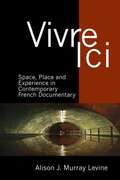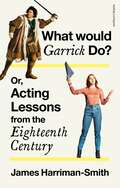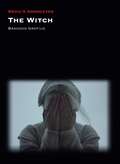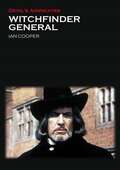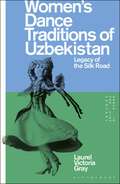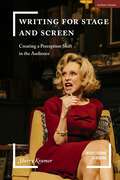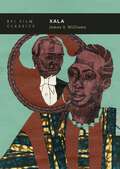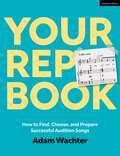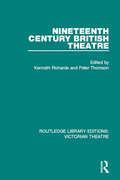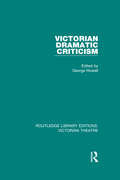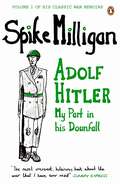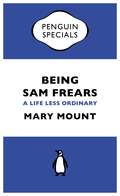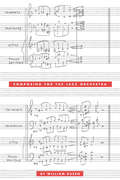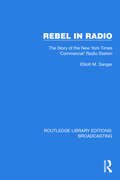- Table View
- List View
Vivre Ici: Space, Place and Experience in Contemporary French Documentary (Contemporary French and Francophone Cultures #50)
by Alison J. Murray LevineVivre Ici invites the reader on a journey through the vast viewing landscape of contemporary French documentary film, a genre that has experienced a renaissance in the past twenty years. The films explored are connected not just by a general interest in engaging the “real,” but by a particular attention to French space and place. From farms and wild places to roads, schools, and urban edgelands, these films explore the spaces of the everyday and the human and non-human experiences that unfold within them. Through a critical approach that integrates phenomenology, film theory, eco-criticism and cultural history, Levine investigates the notion of documentary as experience. She asks how and why, in the contemporary media landscape, these films seek to avoid argumentation and instead, give the viewer a feeling of “being there.” As a diverse collection of filmmakers, both well-known and lesser-known, explore the limits and possibilities of these places, a collage-like, incomplete, and fragmented vision of France as seen and felt through documentary cameras comes into view. Venturing beyond film analysis to examine the production climate for these films and their circulation in contemporary France, Levine explores the social and political consequences of these “films that matter” for the viewers who come into contact with them.
What Would Garrick Do? Or, Acting Lessons from the Eighteenth Century
by James Harriman-SmithThe stage of the 1700s established a star culture, with the emergence of such acting celebrities as David Garrick, Susannah Cibber, and Sarah Siddons. It placed Shakespeare at the heart of the classical repertoire and offered unprecedented opportunities to female actors. This book demonstrates how an understanding of the practice and theories circulating three hundred years ago can generate new ways of studying and performing plays of all kinds in the present.Eight short essays – on emotions, cultivation, character, voice, action, company, audience, and reflection – provide two things: a vivid introduction to the practice and ideas of the eighteenth-century stage, and the story of how these past practices and ideas were used in collaborative workshops around the UK to create new rehearsal exercises. Designed to work alone or in combination, these exercises are also open to further adaptation and analysis as part of a work that treats theatre writers of the past as potential collaborators for those interested in theatre today. Marrying academic and professional theatre expertise, this book ranges through a vast archive of writing about acting, from private letters and battered promptbooks, through to philosophical treatises and celebrity biographies. The exercises, stories, and ideas shared here capture the strangeness of this material – and sometimes its surprising familiarity, as questions asked of actors then seem to anticipate those questions we ask now. A truly unique offering, What would Garrick Do? Or, Acting Lessons from the Eighteenth Century offers a fascinating deep-dive into an important time in theatre history to illuminate practices and processes today.
The Wicker Man (Devil's Advocates)
by Steve WigginsMany fans of Robin Hardy’s The Wicker Man (1973) may know that this classic is considered a fine sample of folk horror. Few will consider that it’s also a prime example of holiday horror. Holiday horror draws its energy from the featured festive day, here May Day. Sergeant Neil Howie (Edward Woodward), a “Christian copper,” is lured to the remote Scottish island Summerisle where, hidden from the eyes of all, a thriving Celtic, pagan religion holds sway. His arrival at the start of the May Day celebration is no accident. The clash between religions, fought on the landscape of the holiday, drives the story to its famous conclusion. In this Devil’s Advocate, Steve A. Wiggins delineates what holiday horror is and surveys various aspects of “the Citizen Kane of horror movies” that utilize the holiday. Beginning with a brief overview of Beltane and how May Day has been celebrated, this study considers the role of sexuality and fertility in the film. Conflicting with Howie’s Christian principles, this leads to an exploration of his theology as contrasted with that of Lord Summerisle (Christopher Lee) and his tenants. Such differences in belief make the fiery ending practically inevitable.
The Witch (Devil's Advocates)
by Brandon GrafiusRobert Eggers' The Witch (2015) is one of the most critically acclaimed horror films of recent years, praised as a genre film of unusual depth which eschews jump scares in favour of a gradually and steadily building tension. Set in newly colonized New England in the early seventeenth century, the film’s deep historical and mythological background, as well as its complicated and interlocking character arcs, make for a film whose viewers will be well served by this Devil’s Advocate, the first stand-alone critical study of the film. As well as providing the historical and religious background necessary for a fuller appreciation, including an insight into the Puritan movement in New England Brandon Grafius situates the film within a number of horror sub-genres (such as folk horror) as well as its other literary and folkloric influences.
Witchfinder General (Devil's Advocates)
by Ian CooperWitchfinder General (1968), known as The Conqueror Worm in America, was directed by Michael Reeves and occupies a unique place in British cinema. Equally praised and vilified, the film fictionalizes the exploits of Matthew Hopkins, a prolific, real-life "witch hunter," during the English Civil War. For critic Mark Kermode, the release proved to be "the single most significant horror film produced in the United Kingdom in the 1960s," while playwright Alan Bennett called the work "the most persistently sadistic and rotten film I've ever seen." Steadily gaining a cult reputation, unimpeded by the director's death just months after the film's release, the film is now treated as a landmark, though problematic, accomplishment, as it exists in a number of recut, retitled, and rescored versions. This in-depth study positions the film within the history of horror and discusses its importance as a British and heritage film. It also considers the inheritance of Hopkins, the script's relationship to the novel by Ronald Bassett, and the iconic persona of the film's star, Vincent Price. Ian Cooper conducts close textual readings of specific scenes and explores the film's various contexts, from the creation of the X certificate and the tradition of Hammer gothic, to the influence on Ken Russell's The Devils (1971) and the "torture porn" of twenty-first-century horror.
Women and Migration in Contemporary Italian Cinema: Screening Hospitality (Transnational Italian Cultures #7)
by Giovanna Faleschini LernerWomen and Migration in Contemporary Italian Cinema: Screening Hospitality puts gender at the centre of cinematic representations of contemporary transnational Italian identities. It offers an intersectional feminist analysis of the ways in which transnational migration has been represented, understood, and constructed in the contemporary cinema of Italy. Drawing on Jacques Derrida’s notion of hospitality and in dialogue with postcolonial and decolonial theory, queer studies, and feminist critiques, the six chapters of the book focus on a series of exemplary fiction films from the last twenty years, which both reflect and shape the nation’s responses to the growing presence of transnational migrants in Italian society. The book shows how questions of gender, sexual difference, and reproductivity have been central to Italian filmmakers’ approaches to stories of mobility and displacement. Gender is also enmeshed in the rhetoric and poetic of hospitality that filmmakers propose as a critical framework to condemn Italian border policies and politics. Women and Migration in Contemporary Italian Cinema: Screening Hospitality traces an arc that moves from the embrace of a humanitarian rhetoric of infinite hospitality toward migrants, apparent in films produced in the early 2000s, to a more fluid understanding of Italian identities from a transnational perspective.
Women’s Dance Traditions of Uzbekistan: Legacy of the Silk Road (Dance in the 21st Century)
by Laurel Victoria GrayThe first comprehensive work in English on the three major regional styles of Uzbek women's dance – Ferghana, Khiva and Bukhara – and their broader Silk Road cultural connections, from folklore rootsto contemporary stage dance. The book surveys the remarkable development from the earliest manifestations in ancient civilizationsto a sequestered existence under Islam; from patronage under Soviet power to a place of pride for Uzbek nationhood. It considers the role that immigration had to play on the development of the dances; how women boldly challenged societal gender roles to perform in public; how both material culture and the natural world manifest in the dance; and it illuminates the innovations of pioneering choreographers who drew from Central Asian folk traditions, gestures and aesthetics – not Russian ballet – to first shape modern Uzbek stage dance. Written by the first American dancer invited to study in Uzbekistan, this book offers insight into the once-hidden world of Uzbek women's dance.
Writing for Stage and Screen: Creating a Perception Shift in the Audience (Introductions to Theatre)
by Sherry Kramer"This book does what no other playwriting book in my experience has done, it offers a new way of seeing and conceiving how theatre makes meaning and carries emotional impact in performance."Suzan Zeder, Professor Emerita and former Head Of Playwriting at University of Texas at Austin, USACombining a step-by-step analysis of the technique of writing for stage and screen with how the mystery, poetry, and emotional momentum is achieved for the audience, Sherry Kramer offers an empowering, original guide for emerging and established writers. In this structured look at the way audience members progress through a work in real time, Sherry Kramer uses plain-spoken vocabulary to help you discover how to make work that will mean more to your audiences. By using examples drawn from plays, film, and streaming series, ranging from A Streetcar Named Desire to Fleabag to Pirates of the Caribbean, this study makes its concepts accessible to a wide range of artists who work in timebound art. The book also features multiple exercises, developed with MFA writers in The Iowa Playwrights Workshop and The Michener Center for Writers, where Kramer taught for the past 25 years, which provide entrance points to help you consider and create your work.
Writing Resistance in Northern Ireland
by Aimée WalshWriting Resistance in Northern Ireland is an examination of feminist republicanism(s) in the north of Ireland between 1975 and 1986. Republican prison protest was rife during this period, and fractures opened up between the feminist and republican movements. Despite their shared objective of self-determination, the two movements did not achieve a natural or total congruence. While it has been argued that there is a disjuncture between feminism and nationalism, this book argues for a new perspective on feminist republicanism(s) in the north and tells the story of a niche collective of republican feminists who came to the fore during the Troubles and sought bodily, political and economic autonomy. The book examines source material including historical narratives, jail-writings, journalism, documentary film and literary texts, and paints a vivid picture of a movement of republican feminist women’s writing concerned with political crisis, gender and the nation. Aimée Walsh uses the plural ‘republicanism(s)’ as a way of encapsulating the varied iterations of nationalist feminism, from militant republicanism in Armagh Gaol to a non-violent literary nationalist feminism. This examination of the interaction between nationalism and gender shows how the study of women’s writing can offer a paradigm shift in the history of the Troubles as seen through a feminist lens.
Xala (BFI Film Classics)
by James S. WilliamsXala (1974) by the pioneering Senegalese director Ousmane Sembene, was acclaimed on its release for its scorching critique of postcolonial African society, and it cemented Sembene's status as a wholly new kind of politically engaged, pan-African, auteur film-maker. Centring on the story of businessman El Hadji and the impotence that afflicts him on his marriage to a young third wife, Xala vividly captures the cultural and political upheaval of 1970s Senegal, while suggesting the radical potential of dissent, solidarity and collective action, embodied by El Hadji's student daughter Rama and the group of urban 'undesirables' who act as a kind of raw chorus to the affairs of the neocolonial elite. James S. Williams's lucid study traces Xala's difficult production history and analyses its daring combination of political and domestic drama, oral narrative, social realism, symbolism, satire, documentary, mysticism and Marxist analysis. Yet from its dazzling extended opening sequence of revolution as performance to its suspended climax of redemption through ritualised spitting, Xala presents a series of conceptual and formal challenges that resist a simple reading of the film as allegory. Highlighting often overlooked elements of Sembene's intricate, experimental film-making, including provocative shifts in mood and poetic, even subversively erotic, moments, Williams reveals Xala as a visionary work of both African cinema and Third Cinema that extended the parameters of postcolonial film practice and still resounds today with its searing inventive power.
Yankee Doodle Dandy: George M. Cohan and the Broadway Stage (Broadway Legacies)
by Elizabeth T. CraftPlaywright, composer, actor, director, and producer George M. Cohan looms large in musical theater legend. Remembered today for classic tunes like "You're a Grand Old Flag" and "Give My Regards to Broadway," he has been called "the father of musical comedy," and his statue stands in the heart of the New York theater district. Cohan's early twentieth-century shows and songs captured the spirit of an era when staggering social change gave new urgency to efforts to define Americanism. He was an Irish American who had the audacity to represent himself as the Yankee Doodle emblem of the nation, a vaudevillian who had the nerve to unapologetically climb the ranks and package his lower-brow style as Broadway. In Yankee Doodle Dandy, the first book on Cohan in fifty years, author Elizabeth T. Craft situates Cohan as a central figure of his day. Examining his multifaceted contributions and the various sociocultural identities he came to embody, Craft shows how Cohan and his works indelibly shaped the American cultural landscape. Informative and engaging, this book offers rich reading for Broadway musical aficionados as well as scholars of musical theater and American cultural history.
Your Rep Book: How to Find, Choose, and Prepare Successful Audition Songs
by Adam WachterPrepping songs for Musical Theatre auditions can be more stressful and confusing than a bad production of Sweeney Todd... but this book can help. How do you find the right songs, and in all the various genres? Where do you get the sheet music? How do you edit it down to make your 16- or 32-bar cut? What even is a 16-bar cut?! Relax, diva: Your Rep Book has the answers to all these questions and so many more. Adam Wachter has taught courses on audition repertoire selection at top conservatories in the US and UK and spent years accompanying and sitting “behind the table” in auditions for everything from university programs to Broadway shows. This friendly and accessible guide is designed to answer all your questions and help you stock that rep book with tight cuts of great songs so you can walk into your next audition and totally nail it. Including a foreword by Broadway casting director Rachel Hoffman and an afterword by Broadway and West End star Caissie Levy, Your Rep Book takes its readers step-by-step through the strangely mysterious process of building your audition repertoire portfolio (or “rep book” in industry jargon). Leaving no stone – or showtune – unturned, it helps you identify what songs you need in which categories and explains where to find them, how to source and cut the sheet music, and even how to communicate effectively with the accompanist and act your song. Whether you're a high school student auditioning for college MT programs or the ink is still wet on your recent BFA, or even if you're a seasoned pro dusting off those old charts, Your Rep Book is here to help!
Nineteenth Century British Theatre (Routledge Library Editions: Victorian Theatre)
by Peter Thomson Kenneth RichardsOriginally published in 1971. Nineteenth-century theatre in England has been greatly neglected, although serious study would reveal that the roots of much modern drama are to be found in the experiments and extravagancies of the nineteenth-century stage. The essays collected here cover a range of topics within the world of Victorian theatre, from particular actors to particular theatres; from farce to Byron’s tragedies, plus a separate section about Shakespearean productions.
Nineteenth Century British Theatre (Routledge Library Editions: Victorian Theatre)
by Kenneth Richards and Peter ThomsonOriginally published in 1971. Nineteenth-century theatre in England has been greatly neglected, although serious study would reveal that the roots of much modern drama are to be found in the experiments and extravagancies of the nineteenth-century stage. The essays collected here cover a range of topics within the world of Victorian theatre, from particular actors to particular theatres; from farce to Byron’s tragedies, plus a separate section about Shakespearean productions.
Victorian Dramatic Criticism (Routledge Library Editions: Victorian Theatre)
by George RowellOriginally published in 1971. The Victorian Age was one of popular theatre and increasingly popular journalism. One manifestation of this journalism was the emergence of the dramatic critic from the anonymity and brevity which had previously characterized periodical treatment of the theatre. If Victorian theatre is regarded as existing essentially thirty years before Victoria acceded and continuing until the outbreak of war in 1914, the names of Lamb, Leigh Hunt and Hazlitt at one end, and of Beerbohm and MacCarthy at the other, can be added to a list that includes Lewes, James, Archer, Walkley, Shaw and Montague. All these writers, and others less famous, are represented in this selection. By selecting the articles on the basis of the play in performance, rather than the play as literature, and by arranging them according to various aspects of the theatrical process, this book builds up a skilful and lively picture of the contemporary theatre at work, in the words of its leading commentators. The anthology successfully conveys the qualities of abundance and vitality to characteristic of Victorian theatre.
Victorian Dramatic Criticism (Routledge Library Editions: Victorian Theatre)
by George RowellOriginally published in 1971. The Victorian Age was one of popular theatre and increasingly popular journalism. One manifestation of this journalism was the emergence of the dramatic critic from the anonymity and brevity which had previously characterized periodical treatment of the theatre. If Victorian theatre is regarded as existing essentially thirty years before Victoria acceded and continuing until the outbreak of war in 1914, the names of Lamb, Leigh Hunt and Hazlitt at one end, and of Beerbohm and MacCarthy at the other, can be added to a list that includes Lewes, James, Archer, Walkley, Shaw and Montague. All these writers, and others less famous, are represented in this selection. By selecting the articles on the basis of the play in performance, rather than the play as literature, and by arranging them according to various aspects of the theatrical process, this book builds up a skilful and lively picture of the contemporary theatre at work, in the words of its leading commentators. The anthology successfully conveys the qualities of abundance and vitality to characteristic of Victorian theatre.
Adolf Hitler: My Part in his Downfall (Spike Milligan War Memoirs #1)
by Spike MilliganVolume one of Spike Milligan's legendary memoirs is a hilarious, subversive first-hand account of WW2'The most irreverent, hilarious book about the war that I have ever read' Sunday Express'Close in stature to Lewis Carroll and Edward Lear in his command of the profound art of nonsense' Guardian______________'At Victoria station the R.T.O. gave me a travel warrant, a white feather and a picture of Hitler marked "This is your enemy". I searched every compartment, but he wasn't on the train . . .' In this, the first of Spike Milligan's uproarious recollections of life in the army, our hero takes us from the outbreak of war in 1939 ('it must have been something we said'), through his attempts to avoid enlistment ('time for my appendicitis, I thought') and his gunner training in Bexhill ('There was one drawback. No ammunition') to the landing at Algiers in 1943 ('I closed my eyes and faced the sun. I fell down a hatchway'). Filled with bathos, pathos and gales of ribald laughter, this is a barely sane helping of military goonery and superlative Milliganese.______________ 'That absolutely glorious way of looking at things differently. A great man' Stephen Fry'Milligan is the Great God to all of us' John Cleese 'The Godfather of Alternative Comedy' Eddie Izzard 'Manifestly a genius, a comic surrealist genius and had no equal' Terry Wogan 'A totally original comedy writer' Michael Palin
Being Sam Frears: A Life Less Ordinary (Penguin Specials)
by Mary MountThis is Sam Frears' story.This is also the story of an actor, a rock-climber and a man born with an extremely rare genetic disorder only affecting Ashkenazi Jews. Sam was supposed to live to the age of 5. In February, he celebrated his 40th birthday.Challenged by blindness and a body under great stress, Sam Frears is trying to live an ordinary life under extraordinary circumstances His struggles and triumphs offer an illuminating look at the differences - and similarities - that make us human. For those who enjoyed My Left Foot and Stuart: A Life Backwards, this Penguin Special offers a fresh look at what it's like to be Sam.
Composing for the Jazz Orchestra
by William Russo"Although it will be of primary interest to those who are engaged in composition themselves, [this] book is also recommended for readers who may wish to gain further insight into just what makes jazz composition so different from traditional approaches."—Malcolm Bessom, The Music Magazine
Composing for the Jazz Orchestra
by William Russo"Although it will be of primary interest to those who are engaged in composition themselves, [this] book is also recommended for readers who may wish to gain further insight into just what makes jazz composition so different from traditional approaches."—Malcolm Bessom, The Music Magazine
Composing for the Jazz Orchestra
by William Russo"Although it will be of primary interest to those who are engaged in composition themselves, [this] book is also recommended for readers who may wish to gain further insight into just what makes jazz composition so different from traditional approaches."—Malcolm Bessom, The Music Magazine
Composing for the Jazz Orchestra
by William Russo"Although it will be of primary interest to those who are engaged in composition themselves, [this] book is also recommended for readers who may wish to gain further insight into just what makes jazz composition so different from traditional approaches."—Malcolm Bessom, The Music Magazine
The Film Business: A History of British Cinema 1896-1972 (Routledge Revivals)
by Ernest BettsFirst published in 1973 The Film Business makes a factual survey of British films from their beginnings in 1896 to 1972. Ernest Betts offers character studies of men who have built the film industry and made it what it is. He examines the financial and political background and shows how, while intending to encourage film production, it has often had exactly the opposite effect and inhibited its free development. Betts also attacks the manner in which the American film industry has taken over the British film industry and points to the failure of successive governments to save it from repeated crises and losses. Through these fluctuations the author keeps a firm eye on the film itself and brings the judgement of film critics past and present to bear on British cinema, as it moves uncertainly and not without its triumphs into the 1970s. This is an interesting read for students and scholars of film studies, British film history and British cinema.
The Film Business: A History of British Cinema 1896-1972 (Routledge Revivals)
by Ernest BettsFirst published in 1973 The Film Business makes a factual survey of British films from their beginnings in 1896 to 1972. Ernest Betts offers character studies of men who have built the film industry and made it what it is. He examines the financial and political background and shows how, while intending to encourage film production, it has often had exactly the opposite effect and inhibited its free development. Betts also attacks the manner in which the American film industry has taken over the British film industry and points to the failure of successive governments to save it from repeated crises and losses. Through these fluctuations the author keeps a firm eye on the film itself and brings the judgement of film critics past and present to bear on British cinema, as it moves uncertainly and not without its triumphs into the 1970s. This is an interesting read for students and scholars of film studies, British film history and British cinema.
Rebel in Radio: The Story of the New York Times 'Commercial' Radio Station (Routledge Library Editions: Broadcasting #30)
by Elliott M. SangerRebel in Radio (1973) looks at the story of WQXR, the rebel New York commercial radio station. It examines WQXR’s place in broadcasting history, and how, at a time when American commercial radio had become but a pawn of the advertising industry, it showed that a radio station could be competitive and still maintain high programme and advertising standards.
